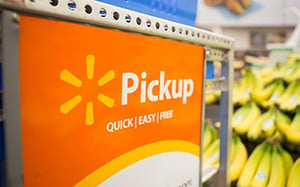 Since March, physical distancing and associated lockdowns have dramatically reversed the trend of consumer spending on food. Consumers, forgoing public venues and eating at home, stocked up on groceries and supplies, boosting sales for the month by 29 percent over the prior year. With such increasing demand and Covid disrupted manufacturing logisticians have been challenged to keep supply chains operational.
Since March, physical distancing and associated lockdowns have dramatically reversed the trend of consumer spending on food. Consumers, forgoing public venues and eating at home, stocked up on groceries and supplies, boosting sales for the month by 29 percent over the prior year. With such increasing demand and Covid disrupted manufacturing logisticians have been challenged to keep supply chains operational.
Distribution channels have been upended, with food stranded upstream, creating food security risks for vulnerable populations. Companies that produce, convert, and deliver food to consumers and businesses face a web of interrelated risks and uncertainties across all steps in the value chain from farmers to end-customer channels. Food service suppliers, for example, faced abrupt order cancellations across their entire customer bases. That left many of them with excess stock that they couldn’t easily redirect to consumers because of packaging-size mismatches. Few home chefs have the cupboard space to accommodate restaurant-size cans of fruit and vegetables but creating consumer friendly formats would require additional investment of capital and time. And that would put perishable materials at risk, threatening narrow margins among prices, logistics, and transaction costs.
Not surprisingly, all that creates uncertainty across the global value chain, with distinct challenges for farmers, distributors, producers, consumer and packaged goods companies, and retailers alike. Managers with a clear understanding of the challenges across the sector will be better prepared to decide whether to wait out the crisis or to invest for a longer term shift in consumer spending. Much also depends on whether, and how quickly they expect a return to pre-pandemic norms.
The Food Supply Chain
Distributors run an optimized and stable supply chain, with upstream orders coming in that anticipate downstream orders going out. Margins depend on there being a steady flow in both directions and having only a subset of products in inventory awaiting orders.
Immediately after coronavirus-related shutdowns, outbound orders suddenly stopped because of government mandated closures of restaurants, even though inbound orders of food kept coming in from farmers, food service producers, and processors. That led to logistical bottlenecks and storage space shortages as distributors worked to cancel incoming shipments of inventory from farmers. Distributors have been significantly affected by quick service and casual dining restaurants in their switch to takeout only, with slow recovery given the staged return to full service. Some distributors have also adapted by at least partially initiating online ordering and delivery services, but that has not been universal. For those unaccustomed to supplying the retail channel, redirecting their sales adds the complexity of modifying their current supply chains and that can also add to costs.
What’s Ahead For Food Service And Retail Industries
In the short to medium terms, in the absence of a COVID-19 vaccine, the challenges for each value chain participant will continue. The severity of those challenges will depend on how quickly and safely governments open up economies and how quickly channels re-stabilize. Even after reopening, food service will continue to face significant challenges such as requirements for a minimum distance between patrons, causing operating constraints that may affect demand.
Given fixed prices and cost driven margin compression in retailer value chains, the returns on investment may not exist for farmers, producers, distributors, and retailers to make medium term investments to address channel mismatches via investments and rebalancing. Therefore, channel mismatches may continue, with significant consequences to individual participants. If inaction leads to restaurant closures, it will remove food capacity from the value chain that would have been consumed. That may create inflationary pressures when demand returns if it exceeds supply. Such exits will also remove jobs from the economy well beyond the initial recovery phase, limiting the strength of the rebound.
Food service companies will need to pursue creative solutions, such as continued delivery and pickup services, to hit break even volumes when there is limited seating in restaurants. Retail channel participants, from farm to shelf, will need to coordinate in unprecedented ways to ensure continuity in supply despite rolling plant closures and pockets of equilibrium rebalancing. Profit margins will likely be affected at each step during messy rebalancing. Companies will need to rewire for agility versus trying to achieve static optimization states.
Over the long term, the impact of uncertainty on the food supply chain could take many shapes, depending on how business owners expect the situation to evolve and resolve. On a spectrum of nine potential economic scenarios, a plurality of executives expects two to be most likely. Those two assume that some combination of effective or relatively effective public health and economic policy interventions will either contain the virus or limit it to some minor recurrences, resulting in a slow recovery. Under those scenarios, the recovery for food services, for example, has its own trajectory, shaped by shifts in consumer habits, safety at restaurants, and the overall economy. Depending on how well the virus is contained and the level of any recurrences, it could take between one and four years for food service to recover. However, it is possible that demand will never return to pre-pandemic levels, creating further challenges across the value chain.
Stay Safe Everyone.
To stay up to date on these and other Logistics topics subscribe to our blog @ http://www.Land-Link.com/blog.
Author
Michael Gaughan
Technology Officer
Land Link Traffic Systems


 Land-Link, a well respected professional organization, has been providing its clients with effective transportation and logistics solutions since 1978.
Land-Link, a well respected professional organization, has been providing its clients with effective transportation and logistics solutions since 1978.

